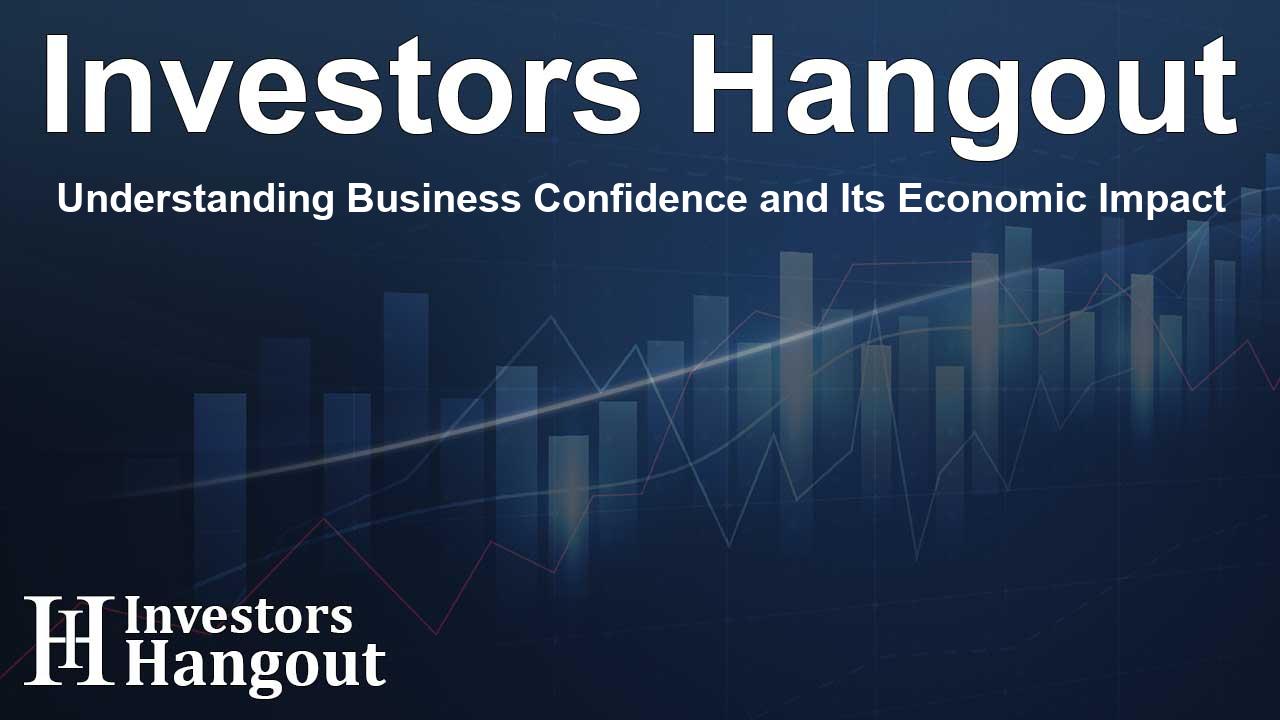Understanding Business Confidence and Its Economic Impact

Examining the Current Business Climate
There's a strong relationship between the confidence level of small to mid-cap stocks and their annual rate of change. Generally, business owners lean towards conservative strategies, fostering growth through policies that advocate for economic benefits, streamlined regulations, and reduced taxation.
We anticipate that the next update of the business confidence index will showcase a significant bounce driven by a surge in business owner confidence, which should correlate with increased capital expenditures (CapEx), job creation, and wage hikes.
Following the recent shifts in leadership, business confidence has notably improved, recovering from the lows experienced over the past few years to reach new heights.
This isn't just limited to small business owners; executives from larger companies are also showing a marked optimism. There is a clear connection between the confidence exhibited by these CEOs and the fluctuations observed in financial markets.
Such optimism isn't entirely unexpected, especially considering the elimination of numerous restrictive policies that had previously hindered business growth. With the repeal of unfavorable regulations, many business leaders are now feeling much more confident about their futures.
However, it is essential to recognize that managers and CEOs often base their outlooks on sentiment, emphasizing that effective economic performance must back any optimism. Thus, this sentiment must be supported by tangible improvements in economic performance.
Will Confidence Lead to Tangible Results?
To comprehend the interplay between sentiment and actual economic indicators is vital.
For instance, small business owners are optimistic about the economic outlook; however, if the demand for their services fails to improve, there is little incentive to expand their workforce. There exists a noticeable gap between projected hiring increases and actual employment trends.
This gap illustrates the disconnect: despite positive government employment reports and GDP data, many small and mid-sized businesses have yet to see the anticipated demand for their offerings. The subsequent analysis of forecasted sales versus achieved sales from the prior quarter brings clarity to this issue.
While optimism runs high among business owners regarding future sales following the change in leadership, a marked increase in actual sales is necessary to sustain that positivity. The demand for labor will heavily rely on the overall consumer demand for goods and services sold.
Moreover, capital investment plays a critical role in driving economic advancement. CapEx contributes significantly to GDP and is closely linked to the economy's health.
The latest survey results indicate that expectations for capital expenditures have risen robustly to record-high levels. Nevertheless, these anticipations are contingent on corresponding economic growth driven by increased sales and demand.
In essence, despite the prevailing optimism among businesses, their forecasts hinge primarily on one key element—consumer demand.
Can Consumers Fulfill Demand Expectations?
Personal Consumption Expenditures (PCE) represent a substantial 70% of GDP calculations. Therefore, if consumer demand falters, it jeopardizes business owners' expansion plans.
Although there has been a surge in consumer confidence, it hasn't matched the heightened expectations set by business owners. PCE has remained stable and aligns with historical trends, indicating that without significant employment and wage growth, consumer spending won't rise sufficiently.
A few factors could contribute to this phenomenon.
Firstly, retail activity has stagnated over recent years post-pandemic, with flat periods typically preceding economic downturns, indicating slowing consumer demand.
Secondly, the condition of full-time employment is essential in driving consumer spending cycles. Sufficient earnings not only support households but also fuel demand. Recent declines in full-time employment signal waning economic demand.
A historical view shows a decrease in full-time employment juxtaposed against an optimistic business outlook, a trend traditionally seen before economic contractions.
Wage growth remains crucial; without substantial increases, demand may not rise significantly. The stagnation of wages against inflation compounds the challenge, hindering overall economic performance as consumers struggle to maintain spending.
Acknowledging the possibility for abrupt reversals in these trends is essential. However, such a turn would necessitate a quick reduction in inflation, lower interest rates, and boost consumer spending through rising wages and employment.
Considering the current economic indicators, the elevated optimism in the business sector seems poised for potential disappointment due to this ongoing “confidence dichotomy.”
Continuously monitoring this dichotomy will be crucial as data evolves.
Strategies for Navigating the Economic Landscape
Investors can take several proactive steps to adapt to an evolving economic environment.
- Watch consumer confidence levels: A rise in consumer confidence may translate into disappointment if underlying economic data falters.
- Prioritize fundamentals: A market driven by speculation instead of sound financial performance could be at risk of corrections.
- Diversify your investments: A diversified portfolio can lower risk exposure during periods of economic uncertainty.
- Be prepared for potential corrections: Historical trends indicate markets may realign with fundamental economic factors, making preparation key to mitigating losses.
However, it's crucial to note that a correction or recession is not imminent. Instead, it highlights the need for ongoing risk management as market conditions remain dynamic. Therefore, if the “confidence dichotomy” starts to affect market trends, employing risk protocols can help safeguard investments against volatility spikes.
For those currently invested in equities, effective risk management strategies should be implemented.
- Adjust stop-loss orders to align with the current support levels of your positions.
- Hedge your investments against substantial market downturns.
- Realize profits from high-performing investments.
- Eliminate underperforming assets.
- Increase liquid assets and rebalance your portfolio to your intended allocations.
The paramount responsibility of investors remains straightforward: to protect capital from short-term disruptions to play the long-term investment game effectively.
- Capital preservation should always be a primary focus. Losing your capital means forfeiting your ability to remain in the market.
- Aim for returns that keep pace with inflation. It's advisable not to get caught up in outperforming the market.
- Set realistic objectives for expectations. The market does not consistently yield returns of 8%, 6%, or 4%.
- Higher potential returns necessitate an increase in risk. This approach often leads to unfavorable outcomes.
- Though recoverable, lost capital cannot recover lost time. Time must be managed judiciously.
- Portfolios should align with specific timeframes. Building a portfolio intended for a long-term horizon with imminent needs can yield poor results.
Frequently Asked Questions
What factors influence business confidence?
Business confidence is influenced by economic conditions, regulations, leadership changes, and market sentiment.
How does consumer spending affect businesses?
Consumer spending drives demand for goods and services, which directly impacts business performance and growth.
What strategies can investors use during uncertain times?
Investors should monitor consumer trends, focus on corporate fundamentals, diversify portfolios, and prepare for potential market corrections.
Why is wage growth significant for the economy?
Wage growth stimulates consumer spending, enhancing overall economic activity and supporting business expansion.
What is the confidence dichotomy?
The confidence dichotomy refers to the disparity between business optimism and the actual economic indicators that may not support this sentiment.
About The Author
Contact Thomas Cooper privately here. Or send an email with ATTN: Thomas Cooper as the subject to contact@investorshangout.com.
About Investors Hangout
Investors Hangout is a leading online stock forum for financial discussion and learning, offering a wide range of free tools and resources. It draws in traders of all levels, who exchange market knowledge, investigate trading tactics, and keep an eye on industry developments in real time. Featuring financial articles, stock message boards, quotes, charts, company profiles, and live news updates. Through cooperative learning and a wealth of informational resources, it helps users from novices creating their first portfolios to experts honing their techniques. Join Investors Hangout today: https://investorshangout.com/
The content of this article is based on factual, publicly available information and does not represent legal, financial, or investment advice. Investors Hangout does not offer financial advice, and the author is not a licensed financial advisor. Consult a qualified advisor before making any financial or investment decisions based on this article. This article should not be considered advice to purchase, sell, or hold any securities or other investments. If any of the material provided here is inaccurate, please contact us for corrections.
